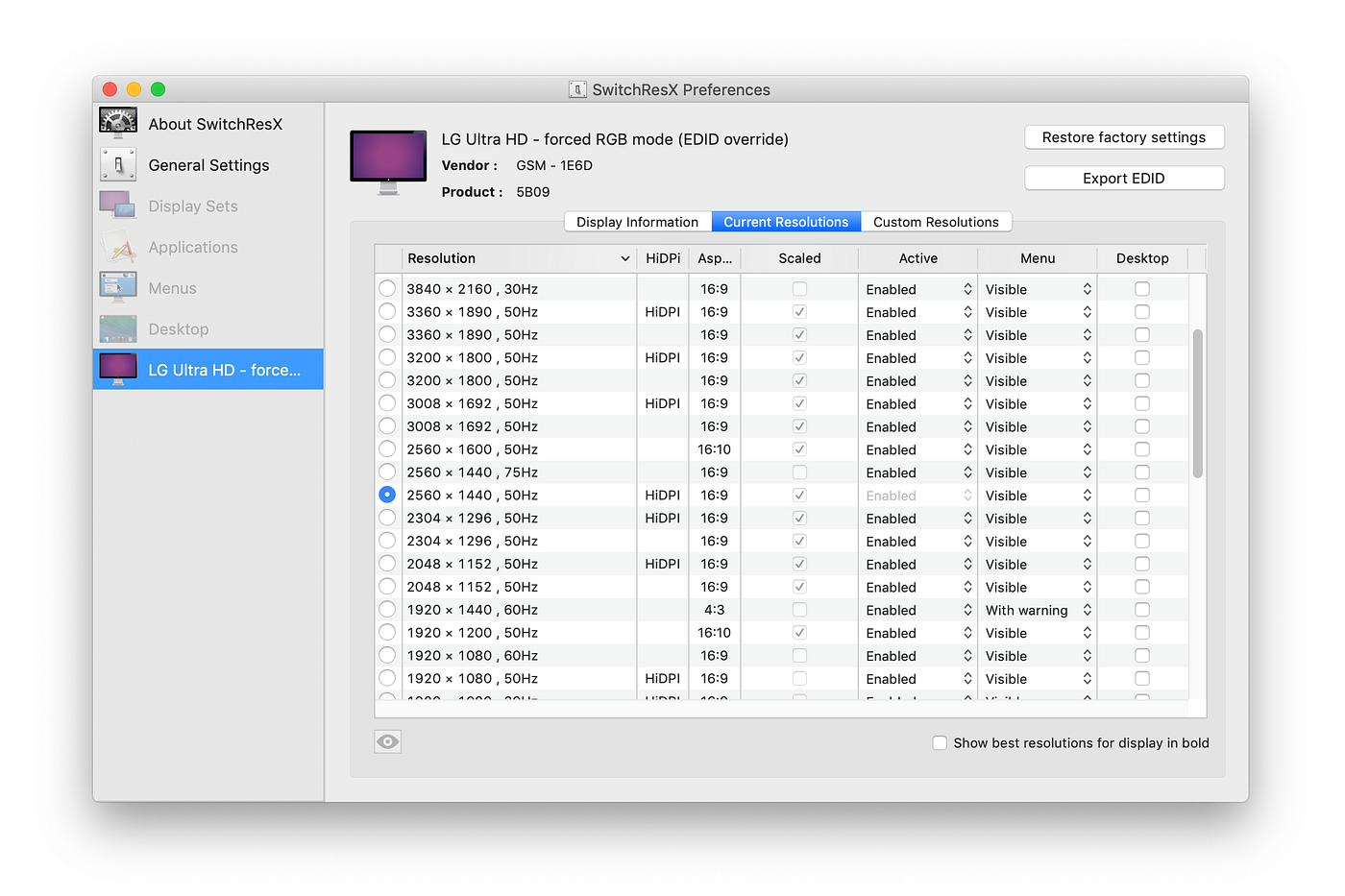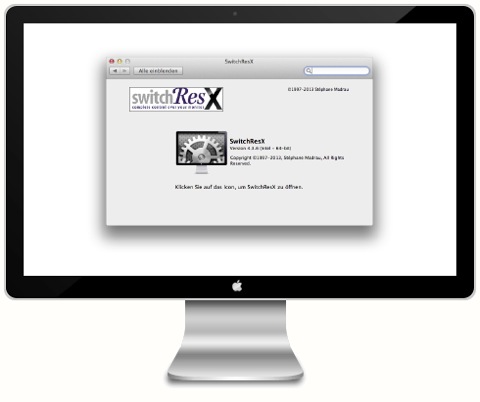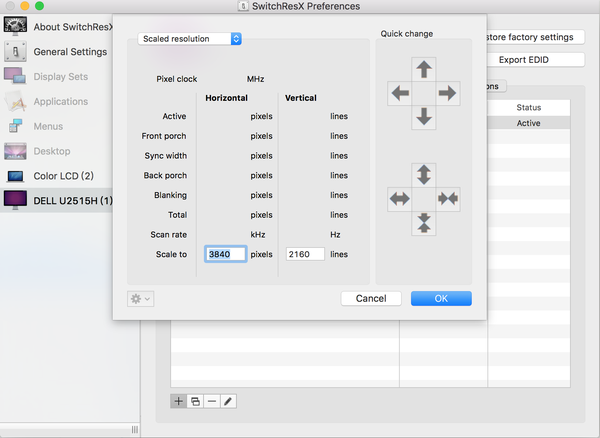
The values are in natural byte-order (big-endian/Motorola byte-order, not little-endian or Intel byte order). Custom resolutions are array entries under scale-resolutions that have type Data and have two 32-bit values. Note how the resolutions are carefully chosen to reflect a 16:9 aspect ratio. My native display on this laptop is 1600x900, so I'm going to add two custom resolutions 1366x7x810. You must add two resolutions for each custom resolution you'd like. Open the plist that is now on your desktop in a plist editor (I use xcode), and then add your custom resolutions under scale-resolutions. Next step is to add your custom resolution(s). Note that DisplayProductID and DisplayVendorID must be converted from hex to decimal for the plist. The DisplayProductName can be whatever you like. In my case, the vendor-id is 0xdae, so I need to create a directory (it may already be present): If the file already exists, you should edit the existing file (copy it to your Desktop for editing). The hex values here determine where in /System/Library/Displays/Overrides, you create the directory/plist file. Your ids are DisplayVendorID and DisplayProductID. Using IORegistryExplorer, look under your display under your graphics device: Next, determine your vendor-id and product-id of your display. If you are running 10.11 or later, make sure you substitute the new path as appropriate. System/Library/Displays/Contents/Resources/Overrides. Note: For 10.11.0 and later, the location of the display overrides have changed. Note: I did not have to do the second one. Sudo defaults delete /Library/Preferences/ DisplayResolutionDisabled

Sudo defaults write /Library/Preferences/ DisplayResolutionEnabled -bool YES There are some quirks, but it works.įirst step is you must enable HiDPI mode: Looking at that file and experimenting with it gave me the information needed to add your own custom resolutions to our own display plist. I did a little poking around, and in particular, I grabbed the display override plist for the built-in retina display. The other day, I borrowed a friend's MacBookPro11,2 with retina display. In addition, they have you extracting EDID and other unnecessary tasks. SwitchResX works great for selecting modes not available in SysPrefs->Displays, but not so good for adding custom resolutions. The problem is they rely on SwitchResX to add the resolutions which is fairly buggy and will not add all resolutions consistently. I've tried a number of methods as documented in the following threads, but they've always come up short and don't really work. This post will use my Lenovo u430 as an example. The result is not retina clarity, but it isn't bad. Sometimes it would be great to use 1440x810 instead. Same thing goes for my Lenovo u430 with 1600x900 14" display. It would be great to use Apple's HiDPI tech to get better scaling. Unfortunately, if you use a normal scaled resolution at 1600x900 the text is not as crisp. But sometimes, it would be useful to work at 1600x900.

Most of the time, I can work close enough to the display such that the text is not too small.


Building a CustoMac Hackintosh: Buyer's Guide


 0 kommentar(er)
0 kommentar(er)
